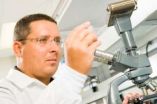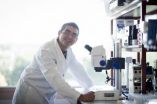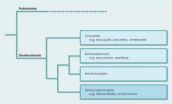Neurologists develop software application to help identify subtle epileptic lesions
Proof-of-concept research at NYU Langone validated by leading MRI methods, warrants further research
2011-02-17
(Press-News.org) Researchers from the Department of Neurology at NYU Langone Medical Center identified potential benefits of a new computer application that automatically detects subtle brain lesions in MRI scans in patients with epilepsy. In a study published in the February 2011 issue of PLoS ONE, the authors discuss the software's potential to assist radiologists in better identifying and locating visually undetectable, operable lesions.
"Our method automatically identified abnormal areas in MRI scans in 92 percent of the patients sampled, which were previously identified by expert radiologists reviewing multiple images," said first-author Thomas Thesen, PhD, assistant professor, Department of Neurology, NYU Langone Medical Center. "Based on these findings, we will focus on the ability of our application to detect the more subtle epileptic malformations that are not easily detectable by the human eye. We believe this could lead to new tools to greatly help radiologists provide more accurate and faster results with objective measures for standardizing readings."
The proof-of-concept study, entitled "Detection of epileptogenic cortical malformations with surface-based MRI morphometry," demonstrates that non-invasive and automated detection of known epileptogenic structural abnormalities in cortex is possible, and supports its potential use as a tool for diagnosis and planning of epilepsy surgery.
The researchers are encouraged by the initial results and have already started evaluating the applications ability to determine undetected lesions in previously negative MRI scans, with findings to be published later this year.
INFORMATION:
The study's other authors include Chad Carlson, Brian T. Quinn, Orrin Devinsky, Jonathan DuBois, Jacqueline French, Olga Felsovalyi, Xiuyuan Wang and Ruben Kuzniecky from NYU Langone Medical Center; Carrie R. McDonald and Eric Halgren from the University of California, San Diego and Richard Leventer from the Royal Children's Hospital, Murdoch Children's Research Institute, University of Melbourne, Australia. The article on PLoS ONE can be found at http://www.plosone.org/article/info%3Adoi%2F10.1371%2Fjournal.pone.0016430.
You can learn more about the Department of Neurology at NYU Langone Medical Center at http://www.med.nyu.edu/neurology.
About NYU Langone Medical Center
NYU Langone Medical Center, a world-class patient-centered integrated academic medical center, is one of the nation's premier centers for excellence in health care, biomedical research, and medical education. Located in the heart of Manhattan, NYU Langone is comprised of three hospitals – Tisch Hospital, a 705-bed acute-care tertiary facility, Rusk Institute of Rehabilitation Medicine, the first rehabilitation hospital in the world, with 174 beds and extensive outpatient rehabilitation programs, and the 190-bed Hospital for Joint Diseases, one of only five hospitals in the world dedicated to orthopaedics and rheumatology – plus the NYU School of Medicine, one of the nation's preeminent academic institutions. For more information visit www.NYULMC.org.
END
ELSE PRESS RELEASES FROM THIS DATE:
2011-02-17
LOS ANGELES – Increasing puromycin-sensitive aminopeptidase, the most abundant brain peptidase in mammals, slowed the damaging accumulation of tau proteins that are toxic to nerve cells and eventually lead to the neurofibrillary tangles, a major pathological hallmark of Alzheimer's disease and other forms of dementia, according to a study published online in the journal, Human Molecular Genetics.
Researchers found they could safely increase the puromycin-sensitive aminopeptidase, PSA/NPEPPS, by two to three times the usual amount in animal models, and it removed the ...
2011-02-17
Children with hip and thigh implants designed to help heal a broken bone or correct other bone conditions are at risk for subsequent fractures of the very bones that the implants were intended to treat, according to new research from Johns Hopkins Children's Center.
Findings of the Johns Hopkins study, based on an analysis of more than 7,500 pediatric bone implants performed at Hopkins over 15 years, will be presented Feb. 16 at the annual meeting of the American Academy of Orthopaedic Surgeons.
Although the absolute risk among the patients was relatively small — nine ...
2011-02-17
Scientists from the Walter and Eliza Hall Institute have begun to unravel how blood stem cells regenerate themselves, identifying a key gene required for the process.
The discovery that the Erg gene is vitally important to blood stem cells' unique ability to self-renew could give scientists new opportunities to use blood stem cells for tissue repair, transplantation and other therapeutic applications.
Professor Doug Hilton, Dr Samir Taoudi and colleagues from the institute's Molecular Medicine and Cancer and Haematology divisions led the study. Dr Taoudi said the research ...
2011-02-17
An international team of scientists including Albert Poustka from the Max Planck Institute for Molecular Genetics in Berlin has discovered that Xenoturbellida and the acoelomorph worms, both simple marine worms, are more closely related to complex organisms like humans and sea urchins than was previously assumed. As a result they have made a major revision to the phylogenetic history of animals. Up to now, the acoelomate worms were viewed as the crucial link between simple animals like sponges and jellyfish and more complex organisms. It has now emerged that these animals ...
2011-02-17
VIDEO:
To test their capacity to learn, the mice are trained to find an underwater platform which is not visible to them from the edge of a water basin. The swimming...
Click here for more information.
Amyloid-beta and tau protein deposits in the brain are characteristic features of Alzheimer disease. The effect on the hippocampus, the area of the brain that plays a central role in learning and memory, is particularly severe. However, it appears that the toxic effect of tau ...
2011-02-17
Scientists have discovered that insects contain atomic clues as to the habitats in which they are most able to survive. The research has important implications for predicting the effects of climate change on the insects, which make up three-quarters of the animal kingdom.
Applying a method previously only used to examine the possible effects of climate change on plants, scientists from the University of Cambridge can now determine the climatic tolerances of individual insects. Their research was published today, 16 February, in the scientific journal Biology Letters.
Because ...
2011-02-17
Ebstein's anomaly is a rare congenital valvular heart disease. Now, in patients with this disease, researchers of the Academic Medical Center Amsterdam in the Netherlands, the University of Newcastle, UK and the Max Delbrück Center for Molecular Medicine (MDC) Berlin-Buch have identified mutations in a gene which plays an important role in the structure of the heart. The researchers hope that these findings will lead to faster diagnosis and novel, more specifically targeted treatment methods (Circulation Cardiovascular Genetics, DOI: 10.1161/CIRCGENETICS.110.957985)*.
Ebstein's ...
2011-02-17
Researchers at Toshiba are working on a way of finding clusters of like-minded bloggers and others online using "social annotations". Social annotations are the tags and keywords, the comments and feedback that users, both content creators and others associate with their content. Their three-step approach could help you home in on people in a particular area of expertise much more efficiently and reliably than simply following search engine results. The same tools might also be used in targeted marketing.
Users of photo gallery sites, such as Flickr (http://www.flickr.com/) ...
2011-02-17
The first study of its kind in the world — involving 336 children aged between six months and 16 years old — has shown that installing a water softener for three months brings no additional relief for eczema sufferers.
Up to one fifth of all children of school age have eczema, along with about one in 12 of the adult population. Anecdotal reports from patients have suggested that hard water may worsen atopic eczema. Population surveys have also suggested a possible link between atopic eczema prevalence and the degree of water hardness.
It had been hoped that water softeners ...
2011-02-17
Philadelphia, PA, 16 February 2011 - Lithium, introduced in the late 1940's, was the first "wonder drug" in psychiatry. It was the first medication treatment for the manic and depressive episodes of bipolar disorder and it remains among one of the most effective treatments for this disorder.
In the past 15 years, as molecular mechanisms underlying the treatment of bipolar disorder began to emerge, basic research studies conducted in animals began to identify neuroprotective and perhaps neurotrophic effects of this important medication.
The identification of these ...
LAST 30 PRESS RELEASES:
[Press-News.org] Neurologists develop software application to help identify subtle epileptic lesions
Proof-of-concept research at NYU Langone validated by leading MRI methods, warrants further research


